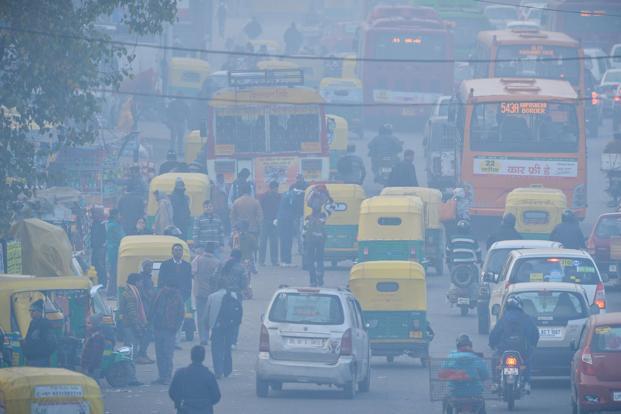s India’s pollution spiraling out of control?
In 2015, 41 Indian cities with a million-plus population faced bad air quality in nearly 60% of the total days monitored, said a latest analysis released by the Central Pollution Control Board (CPCB).
As per CPCB’s data, which is India’s nodal pollution watchdog, Coimbatore and Rajkot had highest number of good quality days, while Varanasi, Gwalior and Allahabad didn’t have even one good air quality day among all the days when their air quality was monitored.
Days wherein all monitored parameters like sulphur dioxide, nitrogen dioxide, and particulate matter are within the prescribed norms were considered good days while remaining monitoring days when value of one or the other parameter exceeds the norms were categorised as bad days.
The analysis said that, as per the monitored air quality data of 41 million plus cities during 2015, 58% of the total monitoring days were bad days while 42% were categorised as good days.
According to the 2011 Census, there are 46 cities in India with population more than one million and they are termed as “million-plus” cities. In the 46 million-plus cities, the air quality is monitored at 205 operating monitoring stations. Of these 46 million-plus cities, air quality data for 2015 was available for only 41 cities.
The three cities—Gwalior, Varanasi and Allahabad—which didn’t have even one single good air quality day was followed by Raipur with 2%, Lucknow with 3%, Delhi and Ghaziabad with 4% each among all the days when their air quality was monitored.
Among the best, Coimbatore had 99% of good air quality days, Rajkot had 96%, Ahmedabad and Madurai 93% each, Vishakhapatnam, Surat and Chennai with 92% each.
The CPCB analysis also revealed that, “most cities recorded high percentage of good days during monsoon season and low percentage of good days during winter season”.
“Coastal cities have recorded higher percentage of good days compared to the land locked cities,” it added.
Another interesting finding of the study was that the southern and western cities have recorded higher percentage of good days.
As per the World Health Organization (WHO) data, Delhi was the world’s most polluted city in 2014. But the latest WHO data released in May 2016 revealed that India’s capitalnow ranks at number 11 on the list. The list includes four smaller Indian cities—Gwalior, Allahabad, Patna and Raipur—among the top 10 polluted cities.
“We are seeing a very rapid pollution proliferation cross the country. In Delhi, we still see some action as there is a very strong public opinion against it. But in rest of the country, especially tier-II cities which are rapidly growing, the air quality condition is rapidly deteriorating. Smaller cities are more polluted,” said Anumita Roychowdhury, executive director of the Centre for Science and Environment (CSE), a Delhi-based environment think tank.
“What we need is a strong national air quality planning strategy so that each and every city has a clear pollution source-wise plan which is to be implement in a time bound manner. Otherwise its implications on public health are going to a very serious,” she added.
Source: LiveMint











